
NEW FOR 2025!
Get closer than ever in our NEW immersive Close Encounters habitat, home to some of the world's most endangered reptiles!
NEW! Close Encounters: The World of Reptiles & Spiders

Come face to face with an exciting new habitat, which will become the home for over ten awe-inspiring species, including some of the world’s most endangered reptiles and insects. There will also be the opportunity to get closer-than-ever to some of the zoo’s cold-blooded creatures, including an impressive 3m long boa constrictor.
Scroll down for a sneak-peak of our NEW species waiting to meet you!
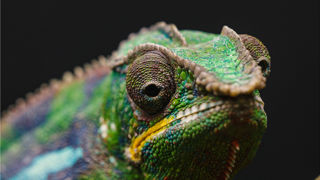
Panther chameleon
The panther chameleon is primarily found in tropical forests native to Madagascar. In the wild, this species faces threats from habitat destruction and illegal hunting for the pet trade.
FUN FACT: This species has independently moving eyes, allowing them to look two different directions at once.
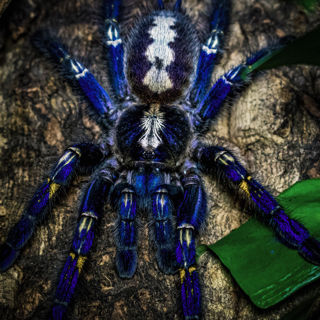
Gooty Ornamental Tarantula
Their striking blue colouration is actually one of the reasons that this species is listed as 'Critically Endangered' on the IUCN Red List, as they are targeted by the illegal pet trade
This fascinating spider species is found in the wild in just one location, which is less than 100km² and facing continued threats from human activities. These threats combined put this unique creature at high risk of extinction in the near future. But, zoos like ours are stepping in to save them!
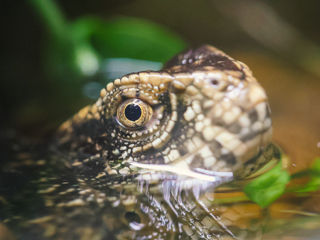
Chinese crocodile lizard
The Chinese crocodile lizard is listed as 'Endangered' on the IUCN Red List, with a population that is continuing to decline. This is due to factors such as habitat loss and harvesting, but largely from illegal hunting for the pet trade. Luckily, zoos like ours are caring for them as part of a coordinated conservation programme, safeguarding the species in European zoos.
The lizard is semi-aquatic and prefers slow-moving streams in subtropical forests across China and northern Vietnam.They are known for their motionless behaviour, which makes them vulnerable to predators and hunters.
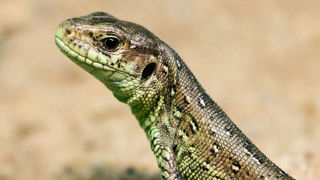
Sand lizard
The sand lizard is one of the UK's rarest reptiles. Although once widespread, their numbers have significantly declined due to habitat loss, land use change, and fragmentation of their sand dunes and heathlands.
Fortunately, there are a number of initiatives in the UK that are playing a huge role in the conservation and reintroduction of this species.
The sand lizard is protected by both British and European law, meaning that it is illegal to to kill, injure, capture or disturb them; damage or destroy their habitat; or to possess or trade in them.
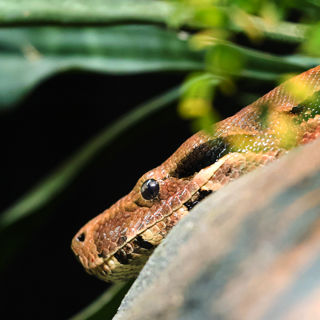
Boa constrictor
The boa constrictor is native to both Central and South America and can be found in a variety of different habitats, inhabiting tropical rainforests to semi-deserts.
Unlike venomous snakes, the boa will catch prey by wrapping around them and suffocating them through constriction. They have special temperature sensitive scales around their mouth which can detect the heat of nearby wildlife, allowing them to find prey in dense foliage.
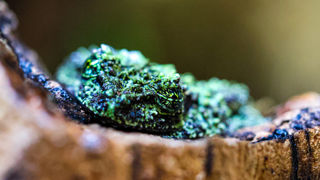
Chapa bug-eyed frogs
The chapa bug-eyed frog is a rare amphibian found in the montane forests of northern Vietnam and Yunnan, China. Its name comes from its distinctive large eyes, which help it blend into its mossy environment.
The biggest threats to this species are habitat loss due to deforestation, agriculture, and despite being found in protected areas, this species has also gained popularity in the international pet trade.

Fiji banded iguana
The Fiji banded iguana is native to a small number of Fiji's islands, and is listed as an endangered species on the IUCN Red List due to threats from habitat loss and the introduction of invasive species.
Fiji banded iguanas prefer moist forests, where they inhabit the tree canopy. They are mainly herbivorous, consuming leaves, flowers, and fruit, but will consume insects and other small invertebrates.
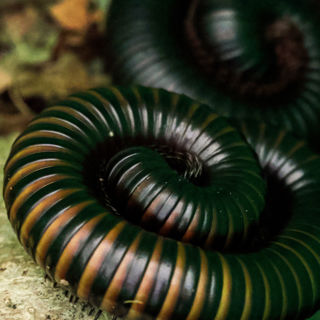
Giant African Millipede
The giant african millipede is the largest species of millipede still living on Earth. In fact, this species can grow from anywhere between 10-30cm long.
Despite, 'millipede' meaning 'thousand-legs' the giant african millipede has somewhere between 300-400. As a detrivore, this species will eat decomposing plant and animal matter, playing a huge role in part of its ecosystem.

Turquoise dwarf gecko
The turquoise dwarf gecko is listed as 'endangered', with wild populations declining due to habitat loss and collection for the illegal pet trade. They are part of a European Ex-situ Programme (EEP), which helps to protect and create a genetically diverse population across zoos in Europe.
This species is sexually dimorphic, meaning males and females look slightly different. Males are a vibrant blue, with their colour changing depending on their mood, while females are typically lighter green or brown.
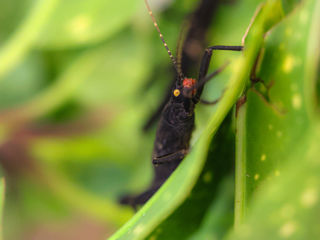
Golden-eyed stick insects
Golden-eyed stick insects are a 'critically endangered' species native to the montane regions of Peru. As an arboreal species, they spend most of their time in the trees.
Interestingly, this species can reproduce asexually through pathogenesis, where offspring can develop through unfertilised eggs and therefore females do not need to mate. This fascinating characteristic makes them popular within the illegal pet trade, as well as facing other threats from habitat destruction.
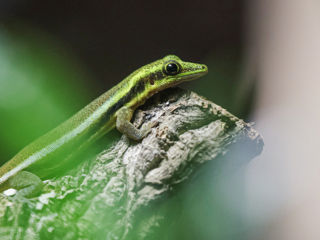
Yellow-headed day gecko
The yellow-headed day gecko is an 'endangered' species native to 2 regions in northwestern Madagascar, typically inhabiting either humid forests, or dry deciduous forests but only in areas where bamboo is present.
This species is under threat due to slash-and-burn agriculture, which is destroying its bamboo-rich forests. It also faces serious risk from hunting for the illegal pet trade, which is why we are honoured to work with this incredible species.

Pancake tortoise
Unlike most tortoises, pancake tortoises have an unusually flat and thin shell which allows them to escape from danger rather than retracting into their dense shell.
They're a critically endangered species, facing threats due to the destruction of their habitat and overhunting for the illegal pet trade. We are honoured to being caring for and protecting them here at the zoo as part of a coordinated conservation programme.
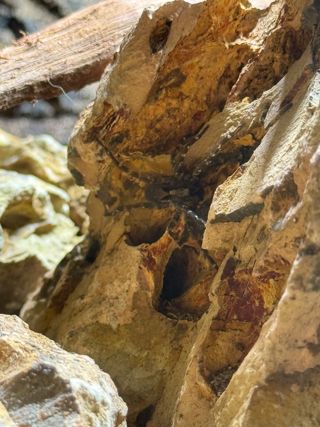
Desertas wolf spider
The desertas wolf spider is a critically endangered species, found in a single valley on a remote island near Madeira with less than 5,000 adults thought to remain in the wild. Despite their small size, this species sits at the top of the food chain!
Fortunately, zoos like ours are collaborating through European coordinated conservation programmes which enable the breeding and conservation of this species, creating a healthy population in support of their wild counterparts
DON'T MISS OUT ON SEEING THESE AMAZING SPECIES UP CLOSE IN OUR BRAND-NEW HABITAT. NOW OPEN.

